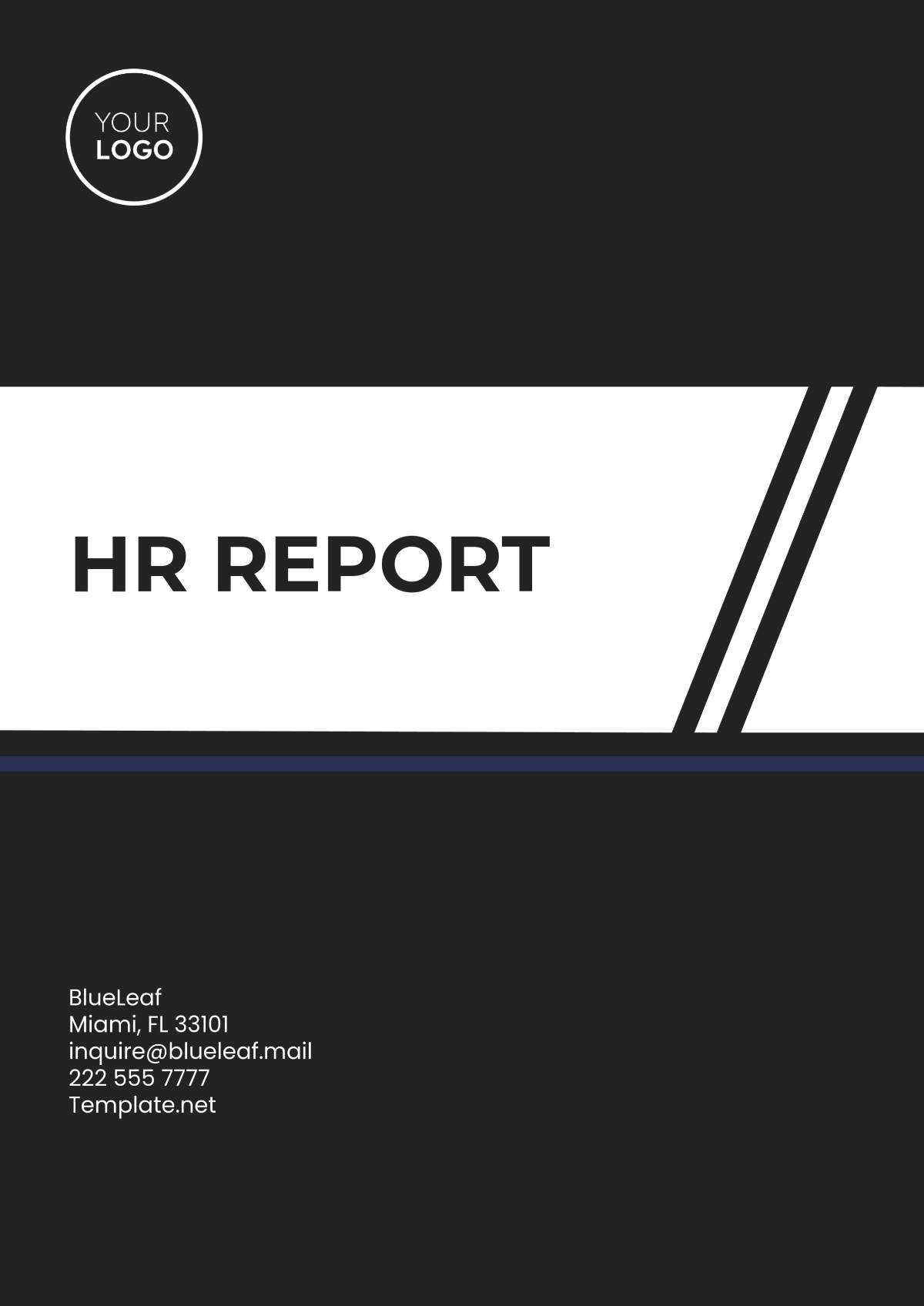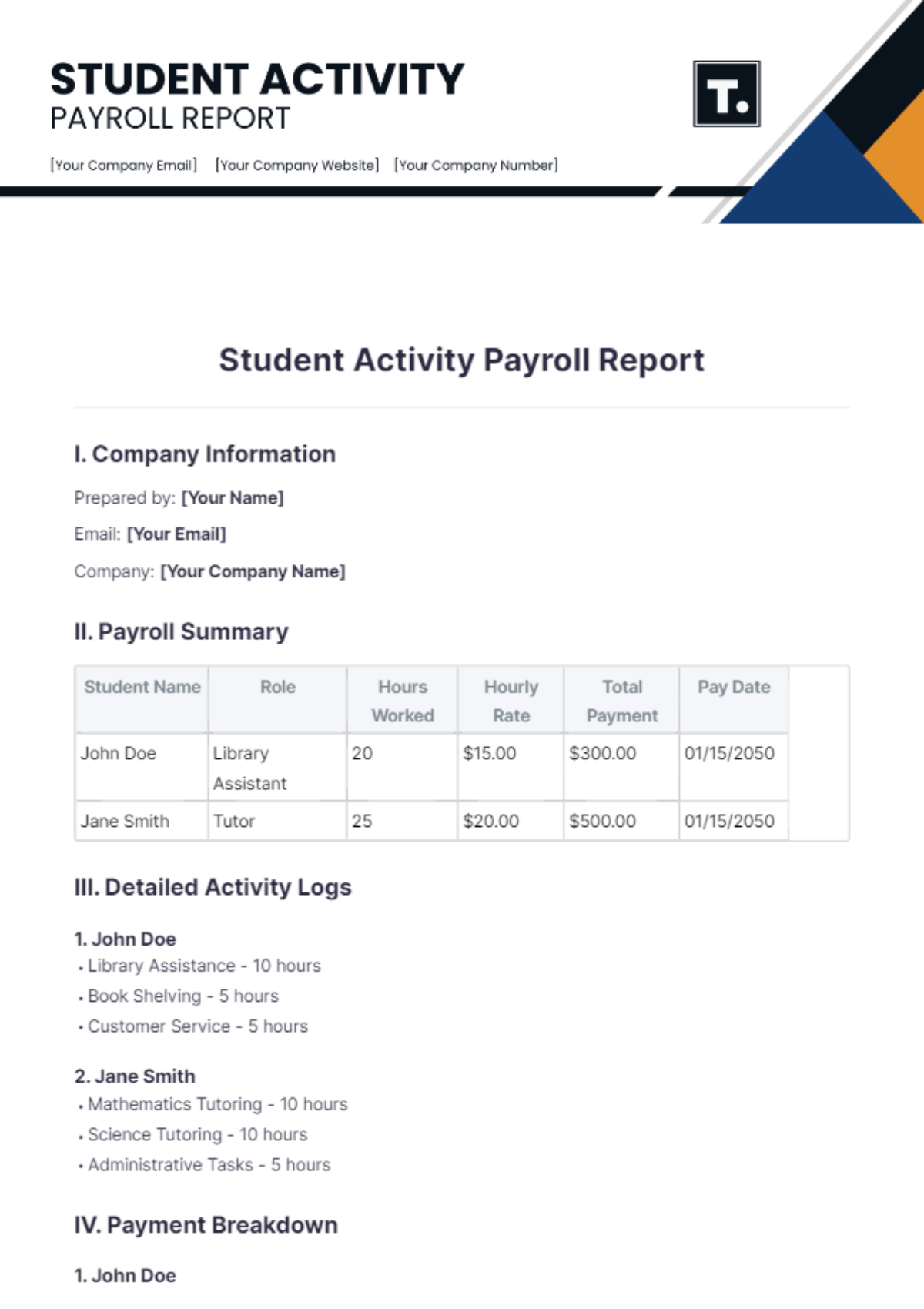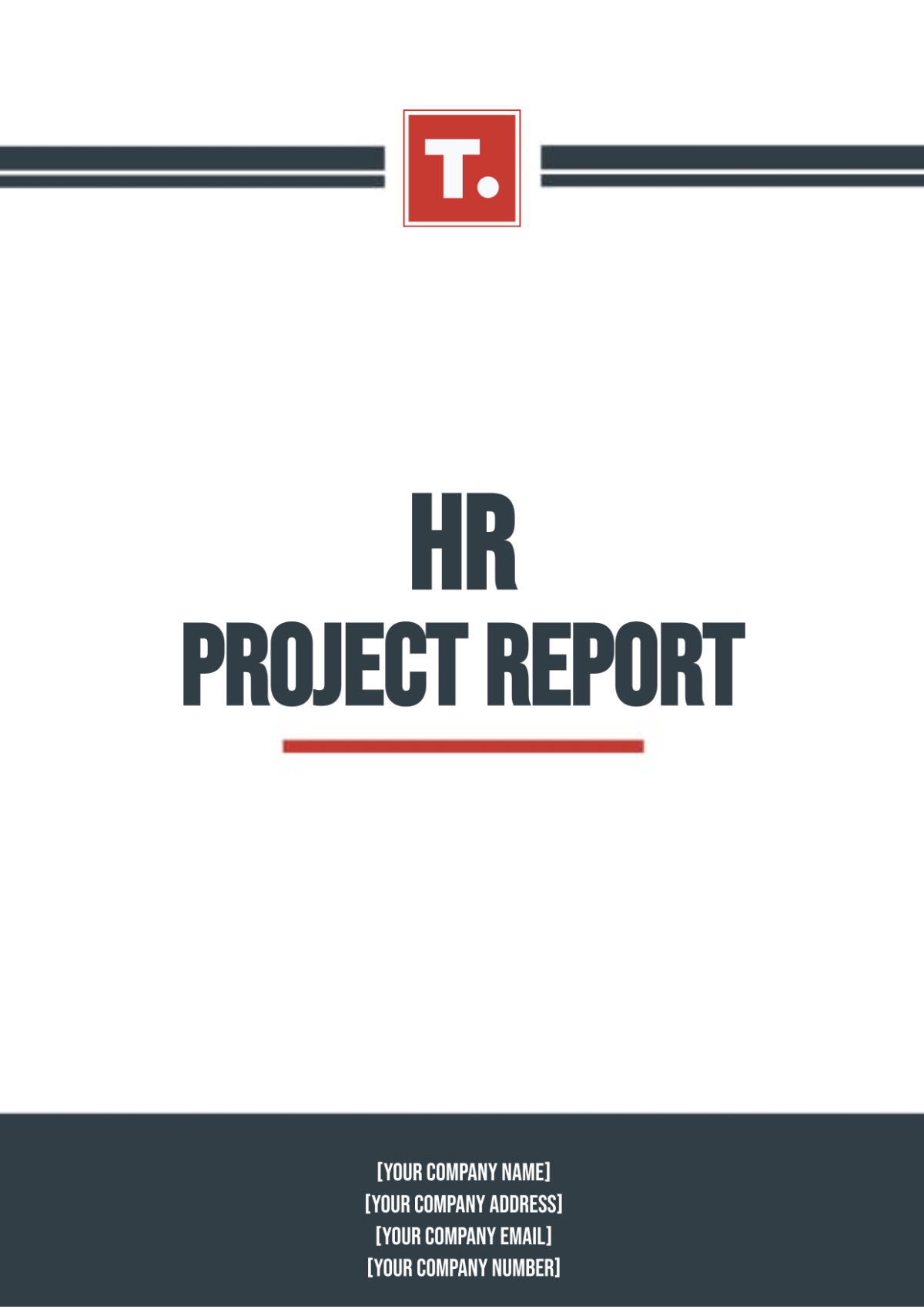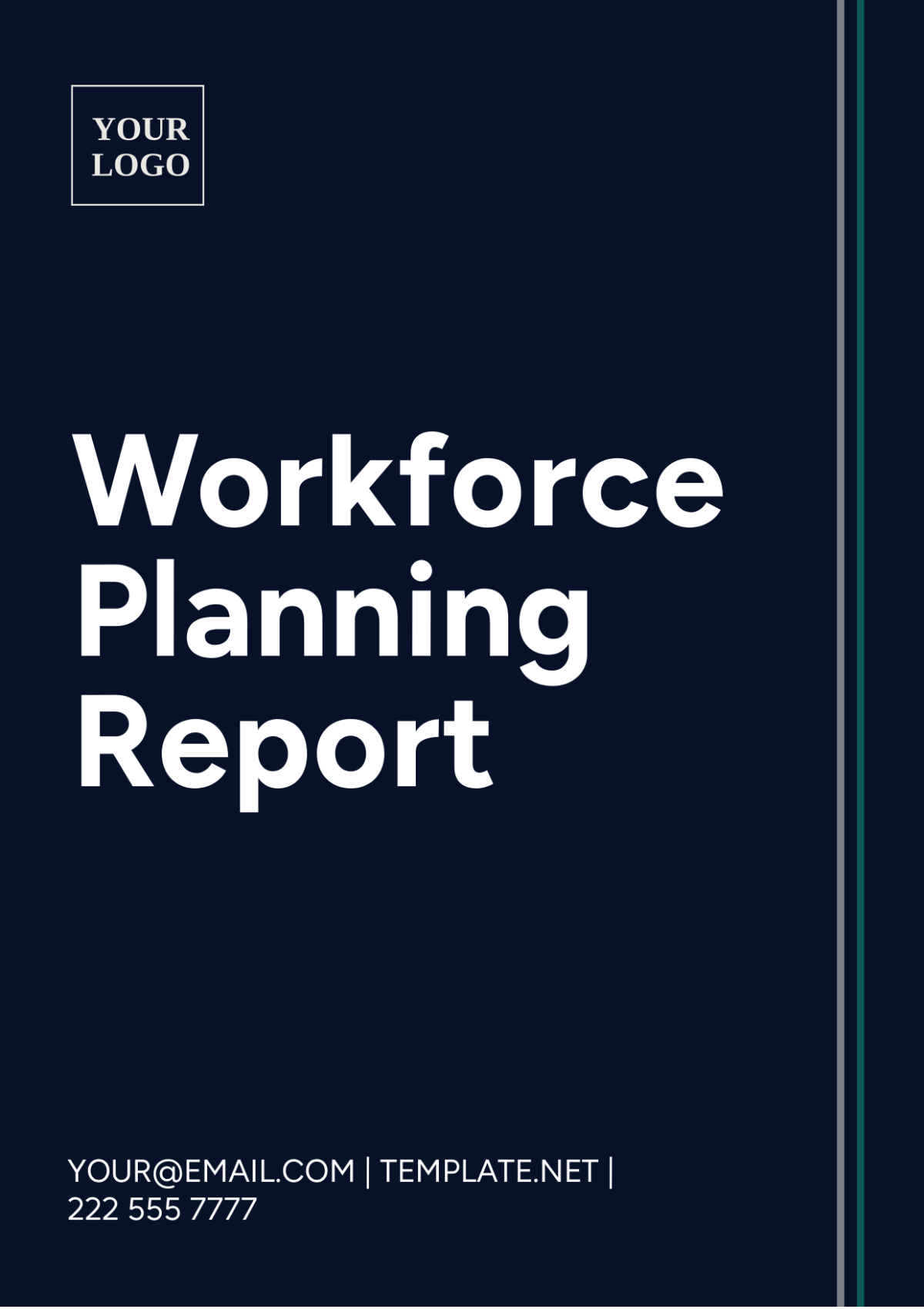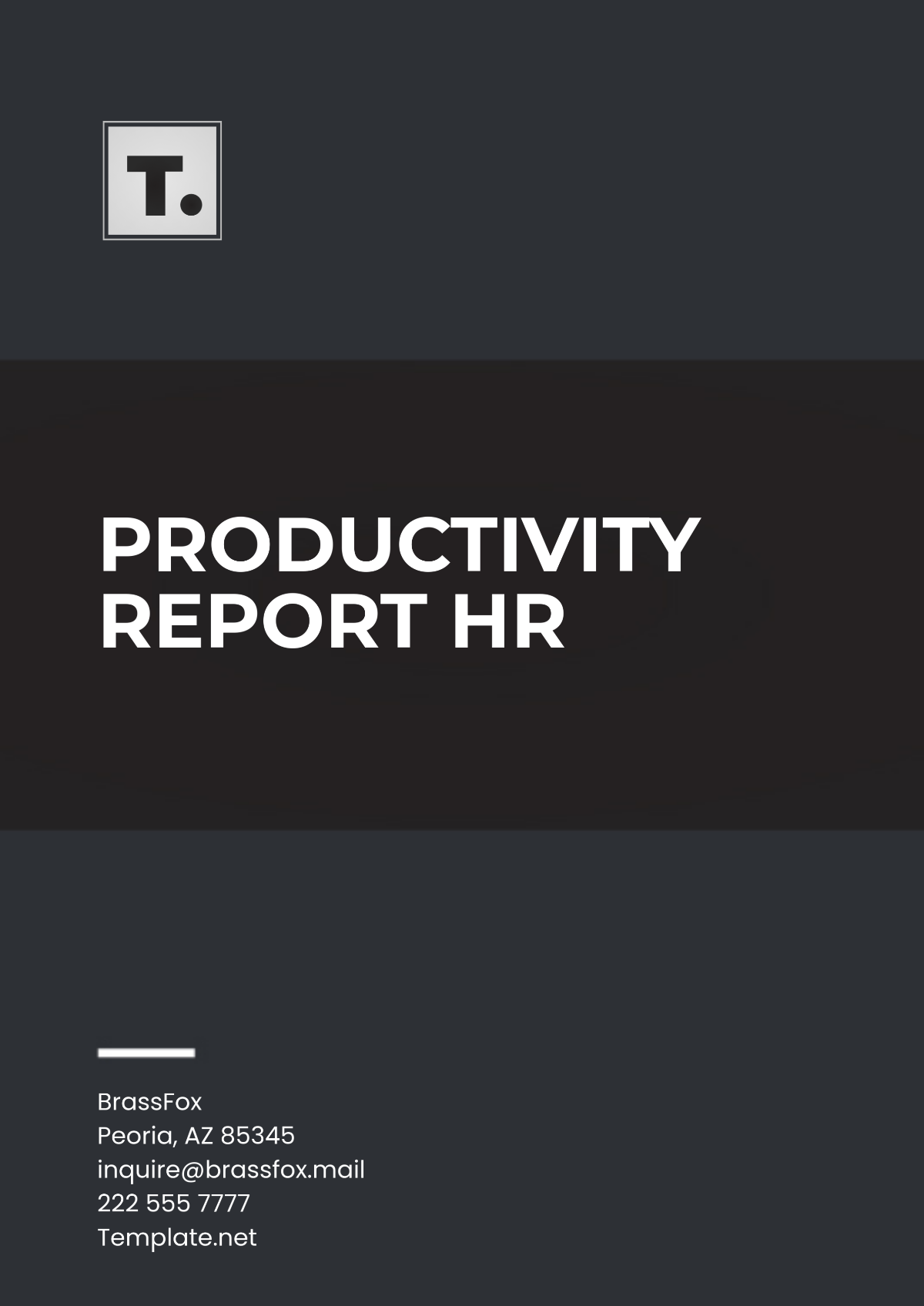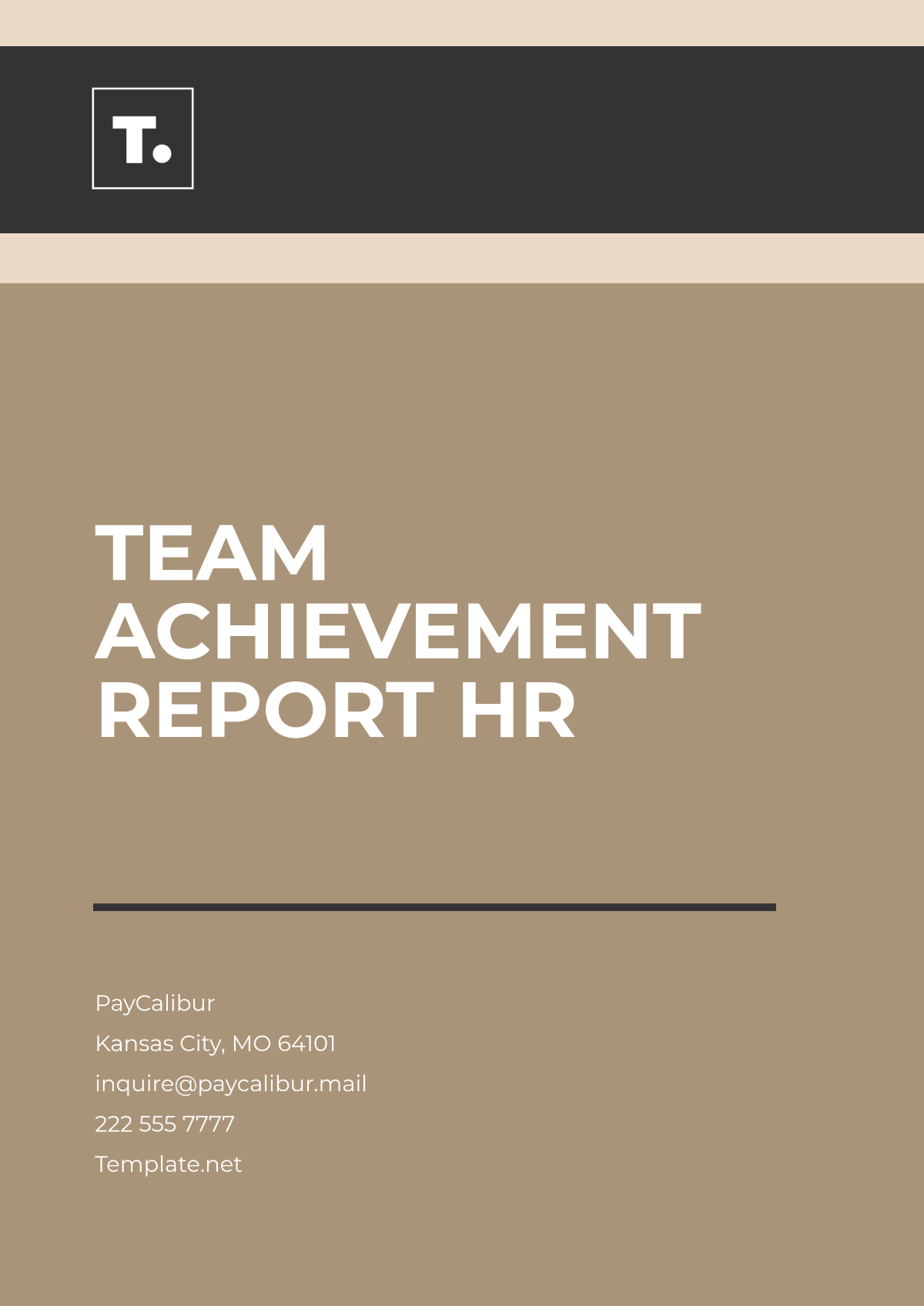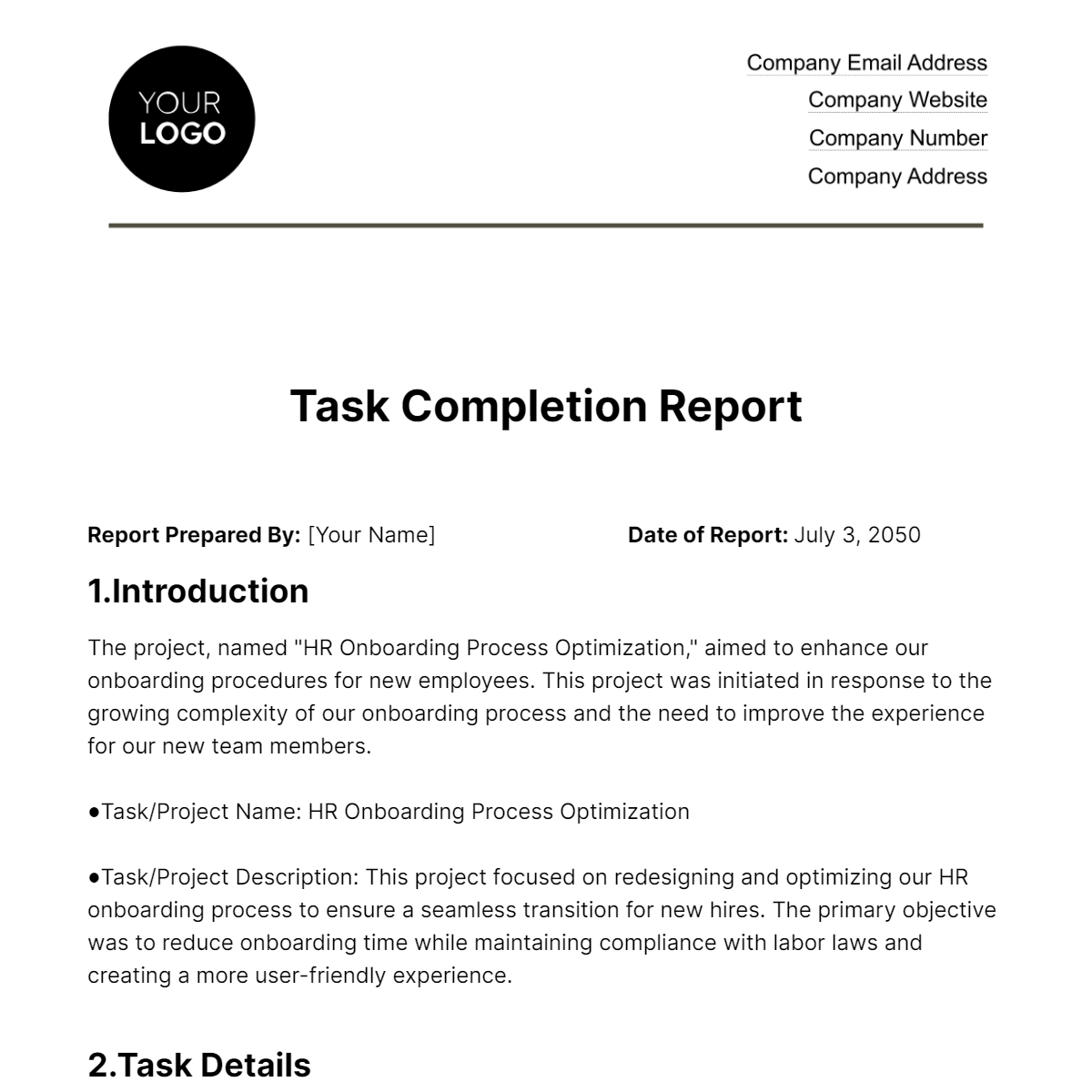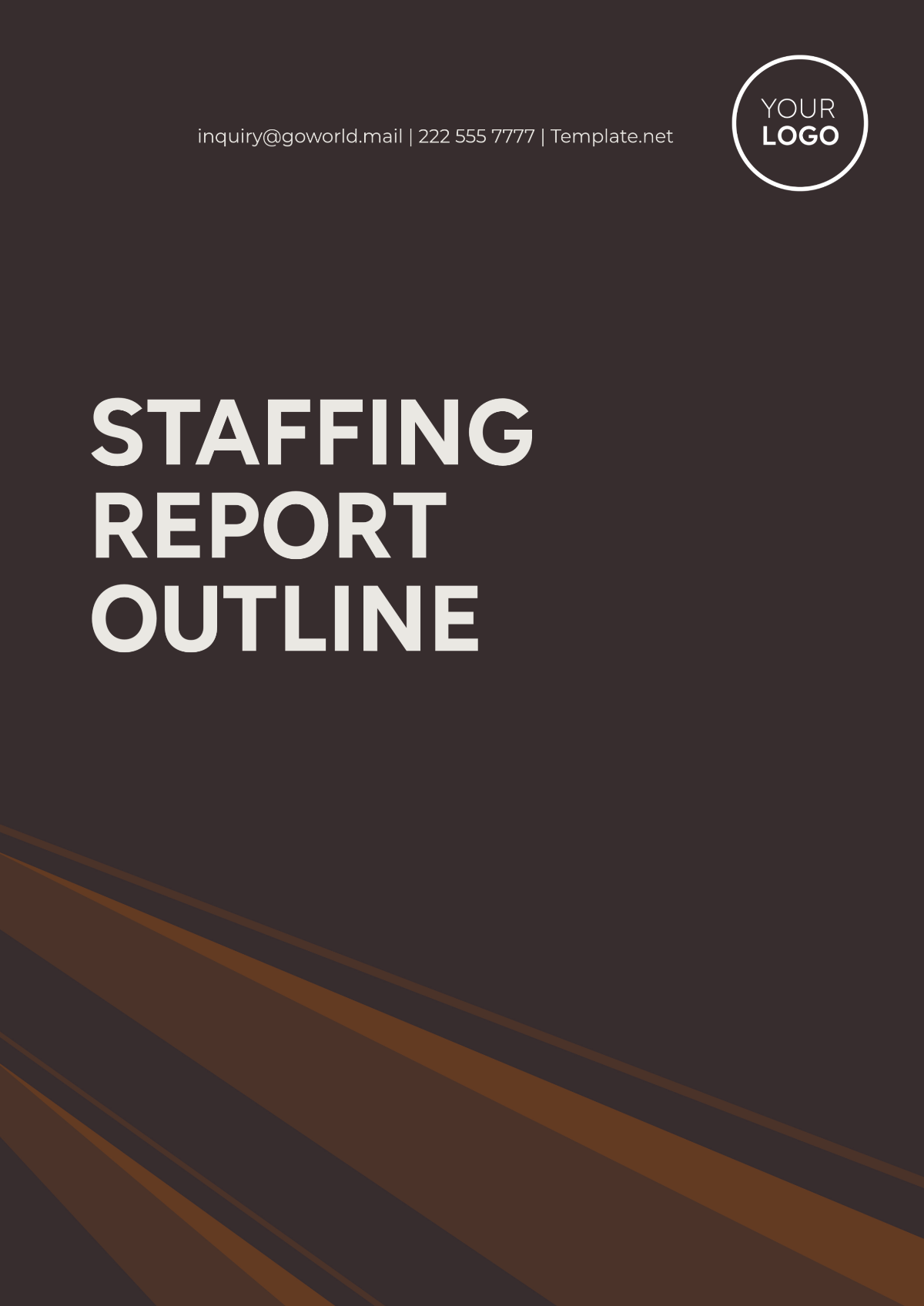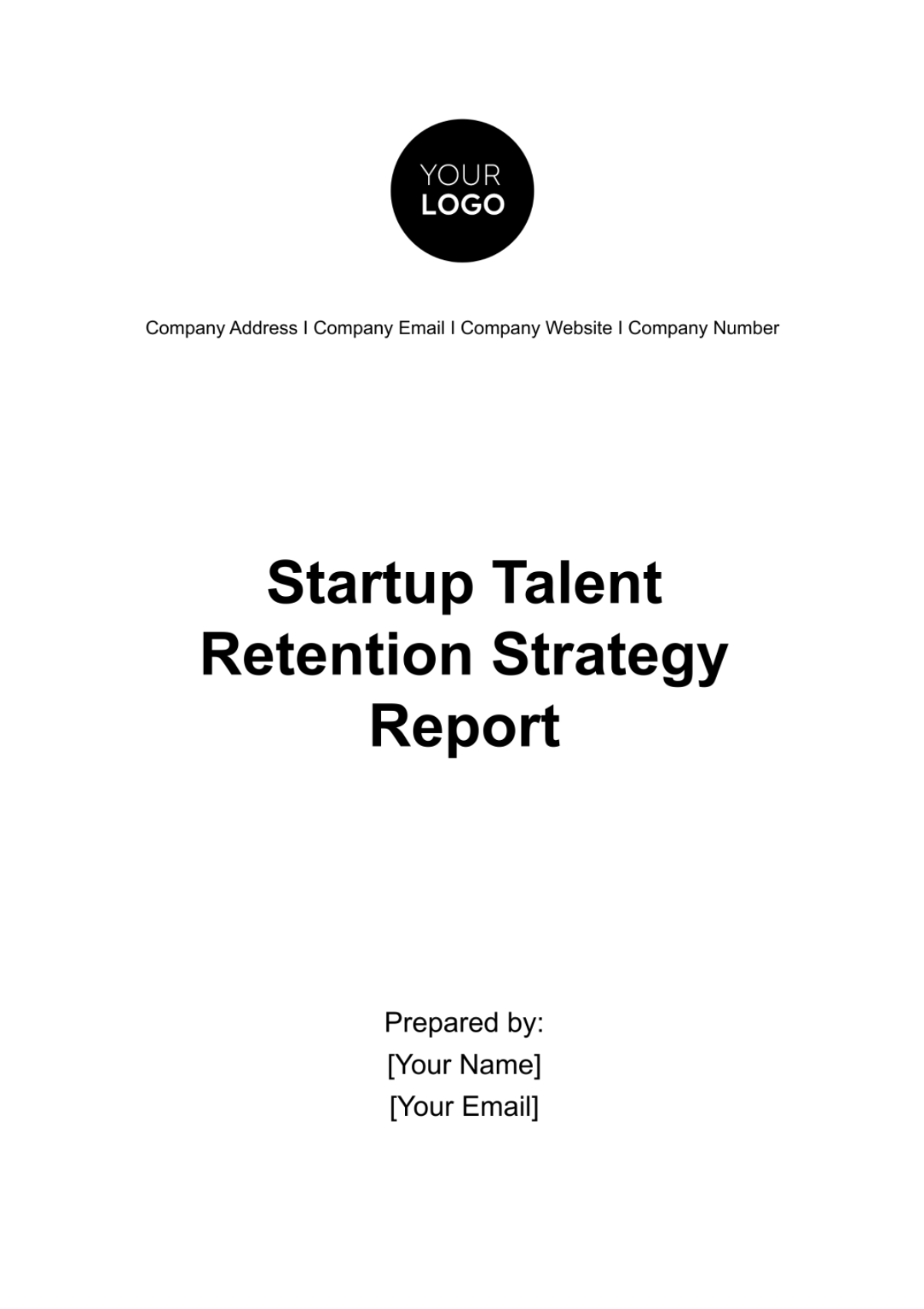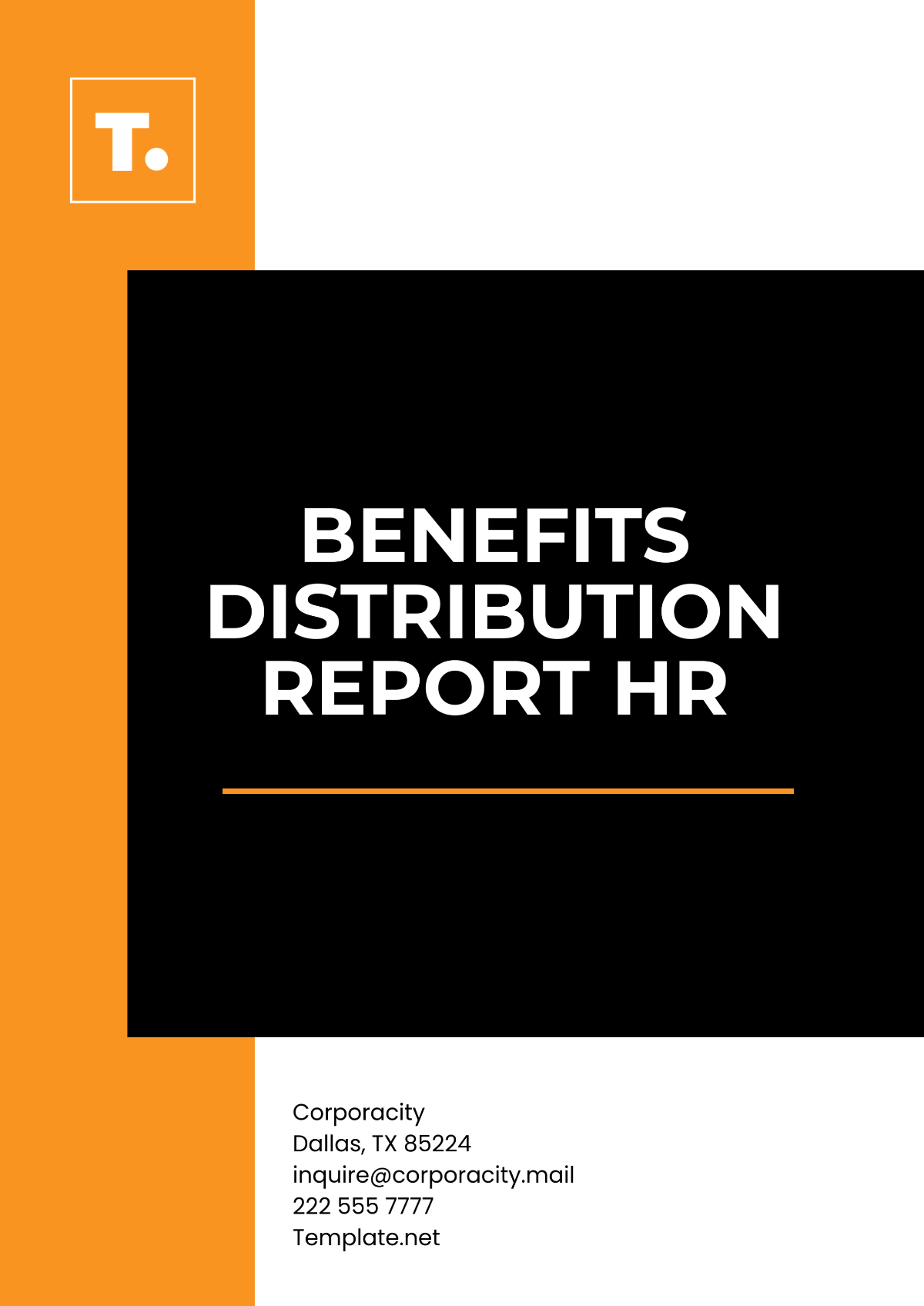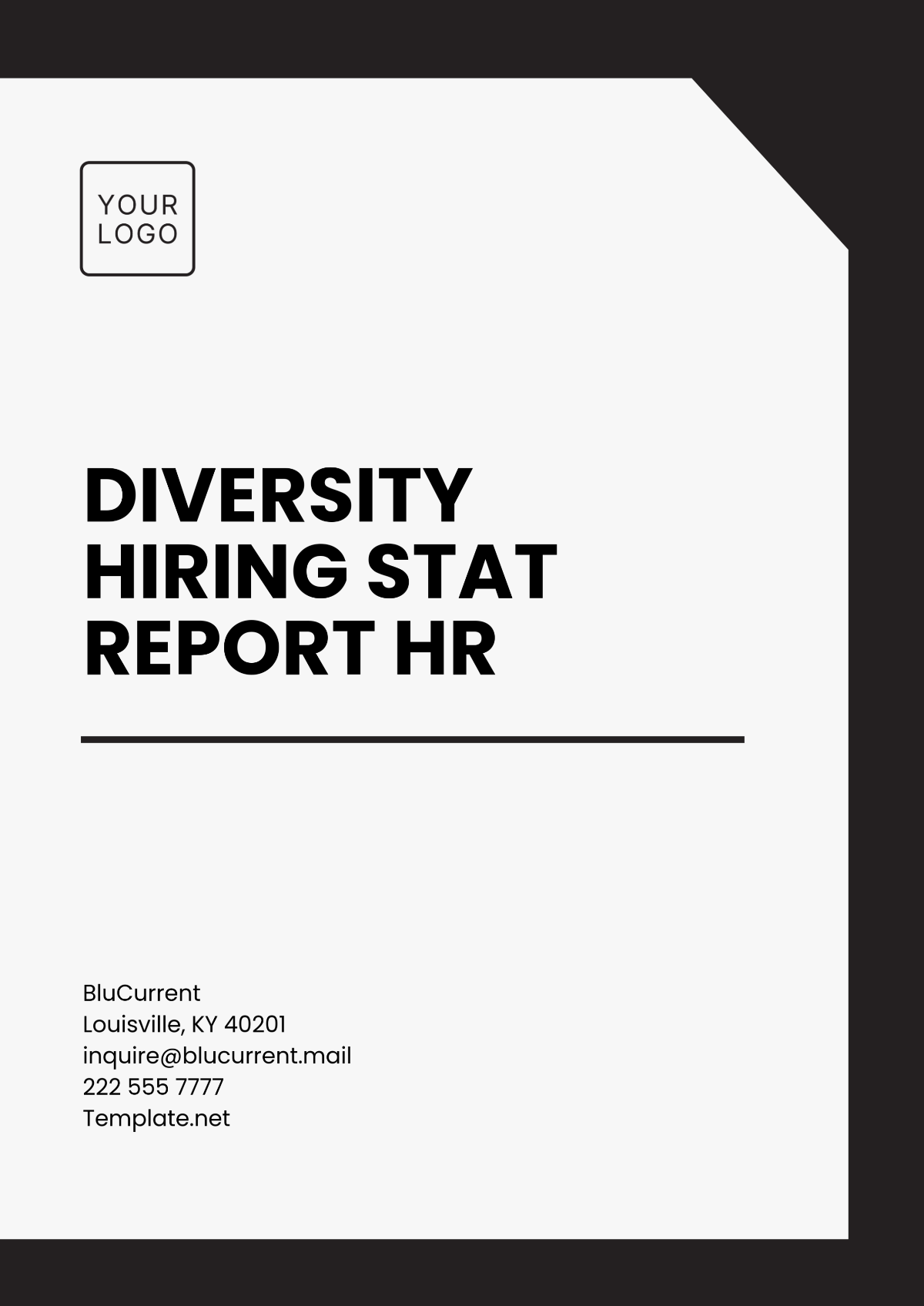HR Project Report
Prepared By: | [Your Name] |
Company: | [Your Company Name] |
Date: | [DATE] |
I. Executive Summary
This report documents the planning, execution, and outcomes of the HR initiative to implement a new Human Resource Information System (HRIS) at [Your Company Name]. The project aimed to replace the outdated legacy system with a modern, cloud-based HRIS to improve efficiency, data accuracy, and user experience. This initiative commenced in January 2050 and concluded in December 2050. The report outlines the objectives, methodology, findings, and recommendations resulting from this initiative.
II. Introduction
The purpose of this report is to provide a comprehensive overview of the HRIS implementation project undertaken by [Your Company Name]. The need for a new system arose from the limitations of the existing HRIS, which included inefficiency, data inaccuracies, and poor user experience. With the rapid growth of [Your Company Name] and the increasing complexity of HR operations, a modern HRIS was essential to meet current and future needs.
III. Project Objectives
The primary objectives of the HRIS implementation project were:
To enhance data accuracy and integrity by reducing manual data entry errors.
To streamline HR processes and improve operational efficiency.
To provide a user-friendly interface that enhances the experience for both employees and HR staff.
To enable robust data reporting and analytics capabilities for informed decision-making.
To ensure compliance with the latest data protection regulations and standards.
IV. Methodology
The methodology section details the approach taken to achieve the project objectives:
Phase | Timeline | Activities |
|---|---|---|
Planning Phase | January 2050 - March 2050 |
|
Execution Phase | April 2050 - August 2050 |
|
Testing Phase | September 2050 - October 2050 |
|
Implementation Phase | November 2050 - December 2050 |
|
V. Data Analysis
This section analyzes the data collected during the project:
Analysis | Results |
|---|---|
Efficiency Metrics | HR processes are now completed 30% faster post-implementation, reducing the average time for processing employee information from 5 days to 3.5 days. |
Data Accuracy | Error rates in employee records decreased from 10% to 1%, showcasing a significant improvement in data integrity. |
User Adoption | A survey conducted in December 2050 revealed that 85% of users found the new system intuitive and easy to use. |
Cost Analysis | The project was budgeted at $2 million and was completed under budget at $1.8 million, with a projected ROI of 20% within the first year. |
VI. Results
The results of the HRIS implementation are summarized as follows:
Result | Outcome |
|---|---|
Improved Efficiency | HR processes are now 30% faster. |
Enhanced Data Accuracy | Error rates were reduced by 25%. |
Positive User Feedback | 85% of users reported satisfaction with the new system. |
Cost Savings | The project was completed under budget, with a projected ROI of 20% within the first year. |
VII. Recommendations
Based on the project findings, the following recommendations are made:
Ongoing Training: Implement continuous training programs to maintain high user proficiency and adapt to system updates.
Regular Updates: Schedule periodic system updates to incorporate new features and improvements.
Feedback Mechanism: Establish a feedback loop to address user issues and enhance system functionality.
VIII. Conclusion
The HRIS implementation project at [Your Company Name] was successful in achieving its objectives. The new system has significantly improved efficiency, data accuracy, and user satisfaction, providing a strong foundation for future HR initiatives. Continued focus on training and system updates will ensure sustained benefits.
